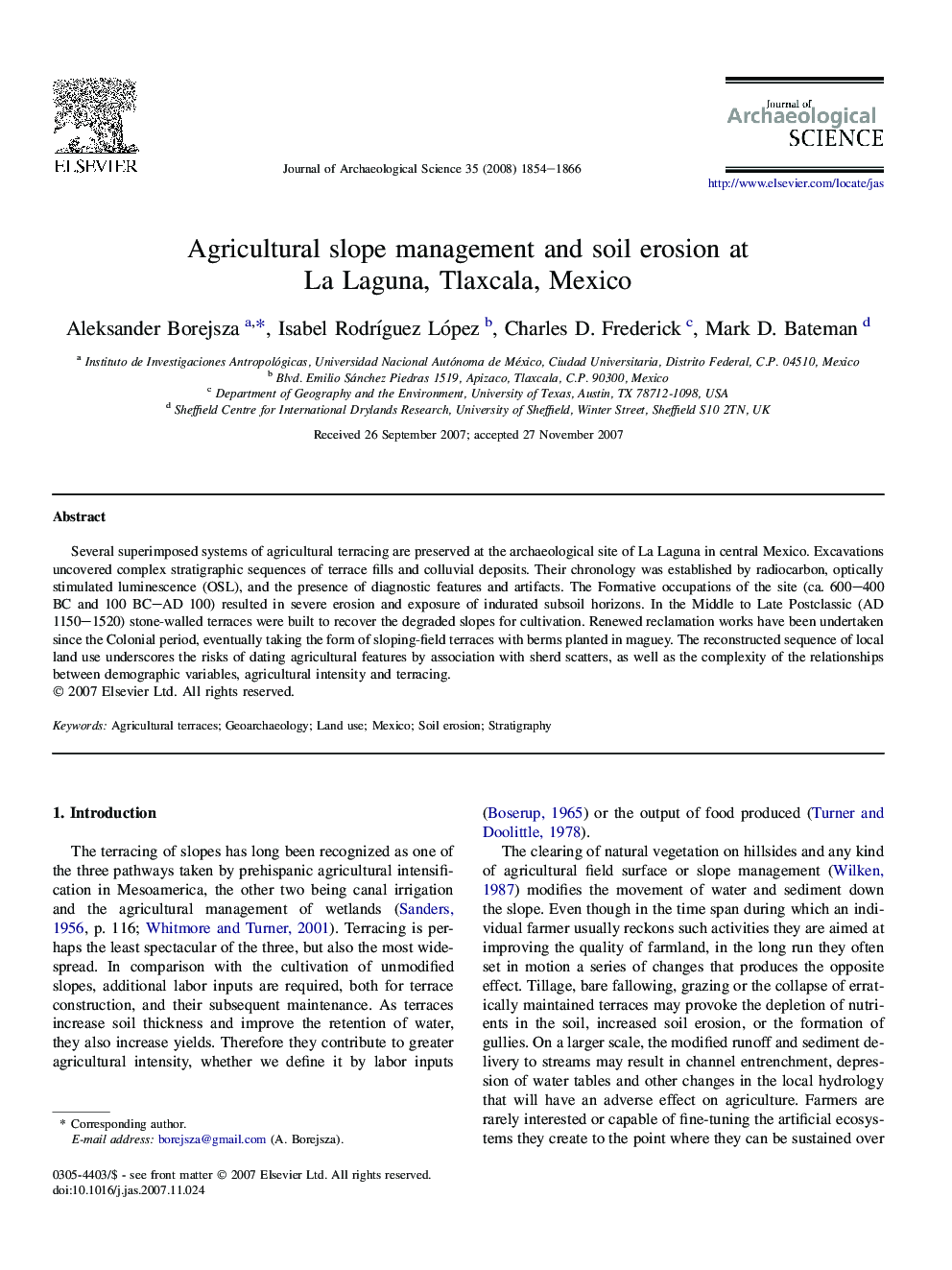| Article ID | Journal | Published Year | Pages | File Type |
|---|---|---|---|---|
| 1037253 | Journal of Archaeological Science | 2008 | 13 Pages |
Several superimposed systems of agricultural terracing are preserved at the archaeological site of La Laguna in central Mexico. Excavations uncovered complex stratigraphic sequences of terrace fills and colluvial deposits. Their chronology was established by radiocarbon, optically stimulated luminescence (OSL), and the presence of diagnostic features and artifacts. The Formative occupations of the site (ca. 600–400 BC and 100 BC–AD 100) resulted in severe erosion and exposure of indurated subsoil horizons. In the Middle to Late Postclassic (AD 1150–1520) stone-walled terraces were built to recover the degraded slopes for cultivation. Renewed reclamation works have been undertaken since the Colonial period, eventually taking the form of sloping-field terraces with berms planted in maguey. The reconstructed sequence of local land use underscores the risks of dating agricultural features by association with sherd scatters, as well as the complexity of the relationships between demographic variables, agricultural intensity and terracing.
